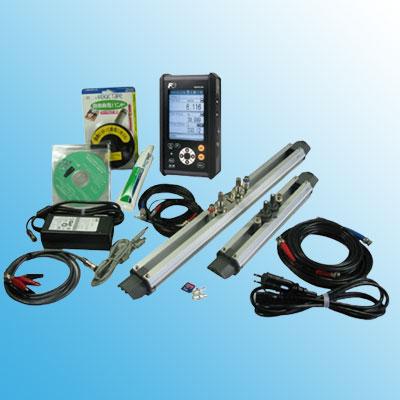In the world of additive manufacturing, two prominent technologies have emerged as frontrunners: Selective Laser Sintering (SLS) and Stereolithography (SLA). When it comes to choosing between them, cost is often a crucial factor. This article delves into the cost analysis of SLS and SLA 3D printing to determine which one is more economical for various applications.
Understanding SLS and SLA
Before we dive into the cost comparison, let's briefly recap what SLS and SLA entail.
SLS 3D Printing uses a high-power laser to selectively fuse powdered material layer by layer. It's known for its versatility, as it can print a wide range of materials, including plastics, metals, and ceramics. SLS doesn't require support structures, making it suitable for complex geometries.
SLA 3D Printing, on the other hand, relies on a UV laser to solidify liquid resin layer by layer. SLA is known for its high-resolution and smooth surface finish. It's often used in applications where intricate details and accuracy are paramount.
Material Costs in SLS vs. SLA
One of the first cost considerations is the material itself. In general, SLS tends to offer a wider range of material options, including various plastics and metals. However, these materials can be more expensive compared to SLA resins.
For instance, SLS nylon powder is a common choice for functional prototypes and end-use parts, but it's pricier than standard SLA resins. If you require a specific material that's only available for SLS, the cost may outweigh the benefits.
Equipment Costs in SLS vs. SLA
The upfront cost of the 3D printing equipment is another significant factor. SLS machines are typically more expensive than SLA machines. The laser sintering process requires a robust build chamber and precise laser systems, which contribute to the higher price tag.
SLA machines, while still an investment, tend to be more affordable. This makes SLA a popular choice for small businesses and individuals looking to enter the world of 3D printing without breaking the bank.
Labor and Maintenance in SLS vs. SLA
When comparing SLS and SLA, labor and maintenance costs should not be overlooked. SLS machines often require more attention and maintenance due to the laser and powder handling. SLA machines are generally easier to maintain, which can translate to lower labor costs.
Post-Processing in SLS vs. SLA
Post-processing is a significant factor in the overall cost equation. SLS parts typically require more post-processing to remove excess powder, while SLA parts may require additional curing and support structure removal.
The choice of post-processing methods and labor can impact costs significantly. SLS parts may need sandblasting, which requires special equipment, while SLA parts may need UV curing chambers.
Production Volume and Scale in SLS vs. SLA
The volume and scale of your production run can also influence the cost-effectiveness of SLS vs. SLA. SLS is often considered more cost-effective for larger production runs due to its higher print speed and larger build volume. SLA may be more economical for small-batch or one-off productions due to its ease of use and lower material cost for smaller quantities.
Conclusion
In the cost analysis of SLS vs. SLA 3D printing, there is no one-size-fits-all answer. The choice between the two technologies depends on your specific requirements, materials, production volume, and budget constraints.
SLS offers versatility and durability but often comes with higher upfront and material costs. SLA provides excellent resolution and surface finish at a lower equipment cost but may require more labor and time for post-processing.
Ultimately, it's crucial to evaluate your project's unique needs and conduct a thorough cost analysis before making a decision. Consider factors such as material availability, production volume, labor, and maintenance when determining whether SLS or SLA is more economical for your 3D printing needs. By carefully weighing these factors, you can make an informed choice that aligns with your project goals and budget.
For more details, please feel free to contact us:
https://www.jtrmachine.com/stereolithography-sla-3d-printing-service https://www.jtrmachine.com/selective-laser-sintering-sls-servicesIn the world of additive manufacturing, two prominent technologies have emerged as frontrunners: Selective Laser Sintering (SLS) and Stereolithography (SLA). When it comes to choosing between them, cost is often a crucial factor. This article delves into the cost analysis of SLS and SLA 3D printing to determine which one is more economical for various applications.
Understanding SLS and SLA
Before we dive into the cost comparison, let's briefly recap what SLS and SLA entail.
SLS 3D Printing uses a high-power laser to selectively fuse powdered material layer by layer. It's known for its versatility, as it can print a wide range of materials, including plastics, metals, and ceramics. SLS doesn't require support structures, making it suitable for complex geometries.
SLA 3D Printing, on the other hand, relies on a UV laser to solidify liquid resin layer by layer. SLA is known for its high-resolution and smooth surface finish. It's often used in applications where intricate details and accuracy are paramount.
Material Costs in SLS vs. SLA
One of the first cost considerations is the material itself. In general, SLS tends to offer a wider range of material options, including various plastics and metals. However, these materials can be more expensive compared to SLA resins.
For instance, SLS nylon powder is a common choice for functional prototypes and end-use parts, but it's pricier than standard SLA resins. If you require a specific material that's only available for SLS, the cost may outweigh the benefits.
Equipment Costs in SLS vs. SLA
The upfront cost of the 3D printing equipment is another significant factor. SLS machines are typically more expensive than SLA machines. The laser sintering process requires a robust build chamber and precise laser systems, which contribute to the higher price tag.
SLA machines, while still an investment, tend to be more affordable. This makes SLA a popular choice for small businesses and individuals looking to enter the world of 3D printing without breaking the bank.
Labor and Maintenance in SLS vs. SLA
When comparing SLS and SLA, labor and maintenance costs should not be overlooked. SLS machines often require more attention and maintenance due to the laser and powder handling. SLA machines are generally easier to maintain, which can translate to lower labor costs.
Post-Processing in SLS vs. SLA
Post-processing is a significant factor in the overall cost equation. SLS parts typically require more post-processing to remove excess powder, while SLA parts may require additional curing and support structure removal.
The choice of post-processing methods and labor can impact costs significantly. SLS parts may need sandblasting, which requires special equipment, while SLA parts may need UV curing chambers.
Production Volume and Scale in SLS vs. SLA
The volume and scale of your production run can also influence the cost-effectiveness of SLS vs. SLA. SLS is often considered more cost-effective for larger production runs due to its higher print speed and larger build volume. SLA may be more economical for small-batch or one-off productions due to its ease of use and lower material cost for smaller quantities.
Conclusion
In the cost analysis of SLS vs. SLA 3D printing, there is no one-size-fits-all answer. The choice between the two technologies depends on your specific requirements, materials, production volume, and budget constraints.
SLS offers versatility and durability but often comes with higher upfront and material costs. SLA provides excellent resolution and surface finish at a lower equipment cost but may require more labor and time for post-processing.
Ultimately, it's crucial to evaluate your project's unique needs and conduct a thorough cost analysis before making a decision. Consider factors such as material availability, production volume, labor, and maintenance when determining whether SLS or SLA is more economical for your 3D printing needs. By carefully weighing these factors, you can make an informed choice that aligns with your project goals and budget.
For more details, please feel free to contact us:
https://www.jtrmachine.com/stereolithography-sla-3d-printing-service
https://www.jtrmachine.com/selective-laser-sintering-sls-services



